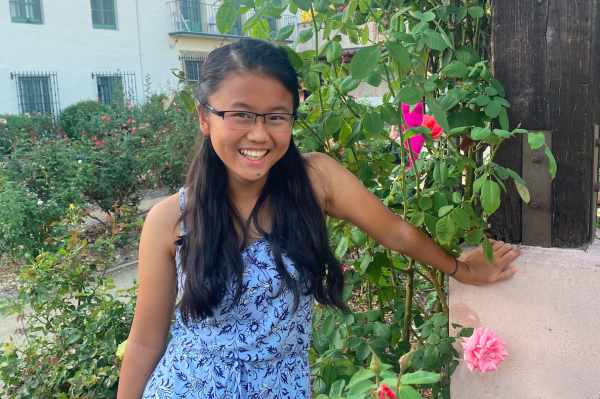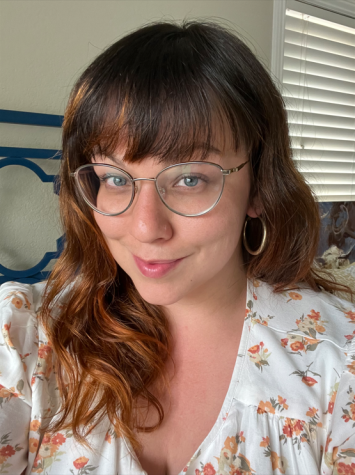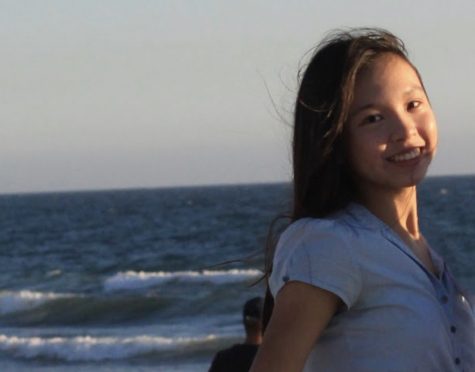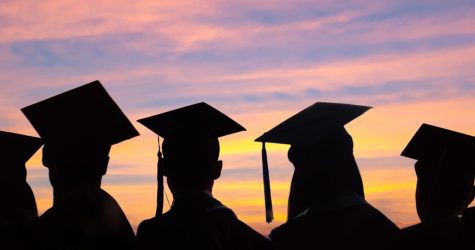Dual perspectives: mask mandates at CHS
No mask mandates (Sebastian Gomez, Guest Writer) Time to unmask this CUSD mandate
Mask mandates come down to two major factors: effectiveness and the repercussions. For over a year now, one thing that has been consistently told to Americans: “follow the science.” Though it is a great idea, it has not been fulfilled in the proceedings of the pandemic.
To be entirely clear, this does not mean that masks are 100% ineffective. In fact, it is highly recommended for those who are sick or in an at-risk group (above the age of 85, or suffering from underlying conditions like obesity) to wear a mask. However, a forced masked mandate, specifically for children and students, is not as effective as it is portrayed. In fact, wearing a mask can come with its own repercussions that people may suffer from in the future.
According to the CDC, as of September 21, the chances of someone age 17 and under dying from COVID is approximately 0.0006%. Children are a definite exemption to the rule with regards to COVID mortality, yet political leaders and school boards still choose to force kids to be masked.
Now one rebuttal to this is that kids should still have to mask up to stop COVID from spreading to more at-risk people, like possibly their parents, grandparents, or other family members/friends. Surprisingly, from a biological standpoint, children are actually very poor spreaders of COVID 19. A meta-analysis conducted in June of this year examined children’s role in the transmission of Coronavirus.
This meta-analysis found “Only 8 (3.8%) transmission clusters were identified as having a pediatric index case. Asymptomatic index cases were associated with a lower secondary attack in contacts than symptomatic index cases (estimate risk ratio [RR], 0.17; 95% confidence interval).”
The underlying reasoning behind mask mandates is understandable. However, mask mandates are not the solution, especially when context is added. From the moment one gets out of bed, one takes risks. Risks present themselves everyday, while in the shower, in the car heading to school, or even outside while one is taking a walk. If viewed without context, people shouldn’t even get out of bed in the morning because there is always a chance that something could happen no matter how exponentially low that chance may be. That sort of thinking obviously makes little sense and it should not be applied to mask-wearing. As previously stated, masks can have their place for those who are more at risk, but this should be a personal option that an individual and/or his or her parents/guardians make. If a person feels at risk when not wearing a mask, then that person by all means should wear one. If a student has family members who want that student to wear a mask to school because they are at risk, then that student should wear a mask. None of these things are bad ideas, but to say that everyone has to do these things regardless of age or at-risk factor by law does not seem logical or science-based at all. Furthermore, this is supported when the possible repercussions of a mask mandate the school age demographic is taken into account.
Human beings have evolved to be very social creatures, and as a result, we have learned how to “communicate” in a myriad of ways. This includes verbally, with the development of language, and nonverbally, through facial expressions and gestures. As people grow older, they learn to “read” and understand these nonverbal facial expressions in order to better relate and socialize with peers and others. In fact, the human brain has a specific area in the temporal lobe known as the fusiform face area (FFA). This region of the cortex in the temporal lobe has been shown to respond most strongly to faces compared with other objects people see for typically developing individuals. A possible repercussion of constantly needing to wear a mask in class is young people miss vital opportunities for brain development. And although most people would consider a “developing individual” a young child in elementary school, psychologists say the brain does not stop developing until the age of 25. This means that these negative repercussions can be affecting high school students, but even worse, a child who is in elementary school right now and has to wear a mask all throughout their schooling in Claremont would miss out on even more opportunities for brain development (seeing as this mask mandate does not seem to want to leave Claremont or LA County). This idea is supported by a study done by psychology professor Clause-Christian Carbon who found that even adults had a hard time understanding nonverbal facial expressions with pictures of masked individuals compared to unmasked individuals.
Although masks do have their place in helping solve the pandemic, a school mask mandate is not the best choice, especially somewhere like Claremont High School or Claremont Unified School District.
Keep mask mandates (Mayo Ou, Reporter) Hold on to mask mandates
Have you ever sat on the edge of your seat, acutely aware of the people breathing beside you, behind you, and in front of you? Nervously checking to see if the people around you have their masks over their noses and mouths? Speaking out and talking about it, or keeping quiet because no one else is mentioning it? Mask mandate areas are needed to help those people who want to feel safer in these situations, or who simply want to be in places where others have masks on.
COVID is a virus one simply can not protect oneself from — other people also need to pitch in to keep each other safe. Wearing masks is a way in which one has to rely on others and vice versa to help protect each other, but when the people around do not really care to put their mask on, that leads to trouble.
That is where a mask mandate kicks in, helping to alleviate the stress put on students worried about their health. Caring for one’s health is not a weakness, and it is not hard to put a mask on properly.
Masks are most effective when everyone wears them. A study from the CDC states that “The relationship between source control and wearer protection is likely complementary and possibly synergistic, so that individual benefit increases with increasing community mask use.” In simpler terms, people are safer when those around them are wearing masks. Masks help protect both the wearer and those around the wearer, but it is safer and more beneficial if everyone participates.
When students ask others to put their masks on, even inside, often they are met with resistance. Others say that they are not sick and that they are already vaccinated, however this does not lift the worries off the people who are nervous. This is due to the fact that COVID spreads asymptomatically through over half of those who catch it, and there is still a chance that the vaccinated could get and spread it around campus as well. As CHS is basically a hotspot in the city of Claremont, where literally thousands of students come together every day of the week, it is a place where the risk of COVID transmission is high.
To stop this from happening, CHS must have specific areas to enforce a mask mandate outdoors as well as indoors, and in hallways. This means that those who wish to feel safer can go there before school or during lunch, and the people who feel more comfortable without masks outside do not have to be under a mask mandate all the time. This gives CHS students the freedom of choice of wearing masks while outside while not hurting those who want to continue wearing masks outdoors.
We definitely need masks indoors. A study by Health Affairs found that mandating face mask use in public (both inside and outside) led to a decline in the COVID-19 growth rate by 0.9 percent in the first five days and 2 percent in the first twenty days. Not wearing masks indoors is not an option, especially as indoor places are not as well ventilated — which is vital to stopping the spread of COVID. Recently, indoor mask mandates in parts of California were compared to Texas and Florida (states with governors vehemently opposed to mask mandates) by the LA Times, and the difference is extreme.
Joining the group wearing masks outdoors is a way for people concerned with improper mask use to feel safer and to acknowledge that they would prefer others to wear their masks around them. A quiet, yet simple and impactful way to say that they feel safer when people around them have their masks on. People can find it immensely difficult to break against peer pressure, especially amongst their friends. When nobody else, including teachers, will tell a person to put their mask over their nose, one can feel nervous. The serious mask-wearers feel like they should say something, while at the same time knowing that they are going to stand out or maybe start an embarrassing scene. Sometimes, the urge to say something wins; other times, peer pressure overtakes. An outdoor mask mandate area at CHS can relieve all that, with people seeing that someone cares about people having masks on properly while also granting them the opportunity to make their own choices.
One can think of it like someone is at a library. People are there, united by some common goals; to find books, read, and/or study. There are not any loud, raucous groups of people disturbing the peace and silence of the library. People who walk into the library know that other people are there too for a good reason. Mask-mandated areas are the same thing — people knowing that others care about masks and respecting that.
Freedom to make personal choices and not have to face judgement is immense. There needs to be a way for individuals to make their own choices while not having to solely trust their goodwill, and mask mandates are the best way to do that.
Hello there! Our goal is to provide relavent, engaging journalism for readers of all ages. Your donation will support the student journalists of the Wolfpacket at Claremont High School, and will allow us to purchase equipment, print our monthly issues, and enter in journalism competitions. We appreciate your consideration!

Mayo Ou is the Head Editor-in-Chief of the Wolfpacket and a senior at CHS in her fourth year on the staff. Her goal this year, other than not procrastinating...








